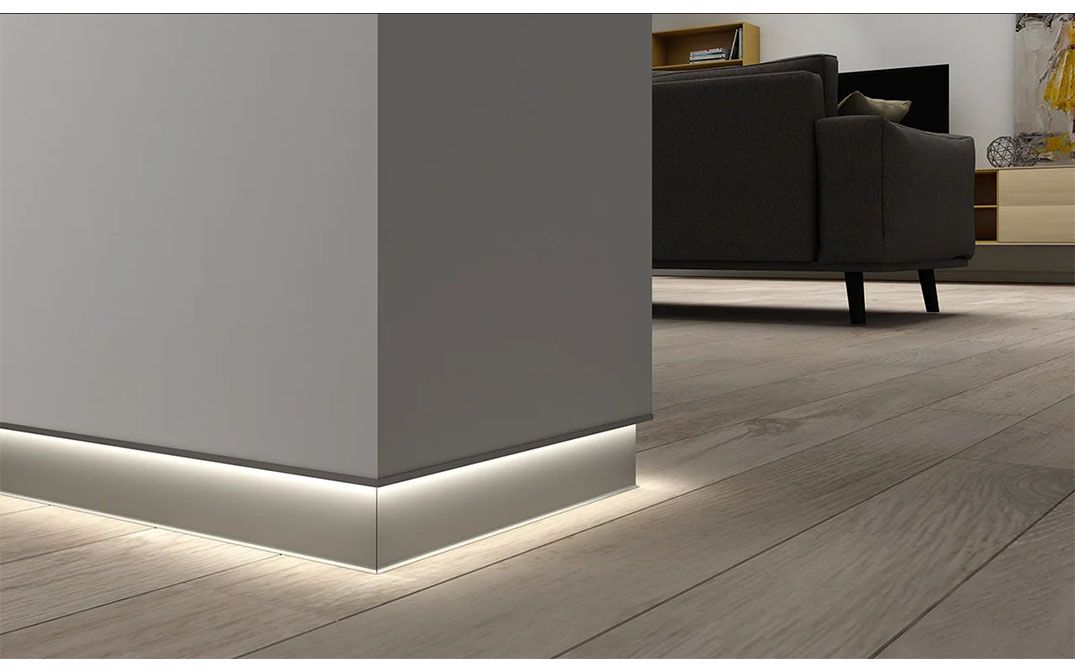The specificity of the plinth production technology for concealed installation
Entry
The most difficult part of the hidden plinth is the basic aluminum profile. In order to present, at least in general terms, the method of making a hidden skirting board, it is necessary to refer to the technology of aluminum processing. According to the consumer classification, this type of aluminum profiles is classified as internal. The expert will add that this is a stamped hollow profile with normal strength and normal manufacturing accuracy.
Stages of profile production
The technological process consists of several stages:
- Foundry At this stage, the necessary alloying elements are introduced into the aluminum melting process and solid ingots or solids of a given shape are formed.
- Urgent. The blanks are subjected to plastic deformation in order to obtain profiled elements of the desired shape and size.
- Cutting profiles and aging metals.
- Profile surface treatment.
The casting stage is the most difficult, responsible and resource-intensive. The chemical composition of the metal determines its properties, therefore the quality of pre-cast blanks is a key condition for the quality of the finished profile.
Plastic deformation of heated semi-finished products at the pressing stage is carried out by several methods: direct, reverse or butt pressing. The inner profiles have a complex cross-section and are produced by back-pressing.
In cases where a particularly high strength is required from the finished product, the extrusion method is used in one of the variants: cold, warm or hot. With this processing method, the ingot is heated to a temperature specified by the process requirements. The melt is then fed into an extruder and forced through a die.
Create a profile section
The matrix is the most important part of the production process of profile elements. In its simplest form, it looks like a steel disc with a hole. The contour of the hole in the matrix corresponds in shape and linear dimensions to the cross-section of the profile.
The pressing process itself is relatively simple. The workpiece heated to a temperature of 400 ° C ... 550 ° C (depending on the features of the technology and alloy) is loaded into a heated container. The punch of the press is pressed into the container and creates tremendous pressure during the movement. The metal is pushed through the die opening and exits from the opposite side in the form of a profile with a given cross-section. For the production of profiles with a complex cross-section, more complex dies are used than just a disc with a hole.
In the pressing process, profile sections up to 70 meters long are obtained. After cooling, they are cut into standard segments. The standard of the internal profile is usually 3 meters.
Additional processing of profile elements
The aging of aluminum is intended to strengthen the metal and remove internal stresses in the product. The process consists in heating the profile to a temperature in the range of 150°C...290°C (annealing) and rapid cooling (hardening). The metal is then kept at a stable temperature for some time.
The last stage of profile production is the application of protective and decorative coatings. May be:
- Polymer coating painted in standard colors;
- A polymer imitating the color and texture of natural materials;
- Anodizing.
Anodizing is a sequential mechanical, chemical and electrochemical treatment of metal. Eventually, a dense film forms on the surface that protects the metal from corrosion. During electrochemical treatment, colored compounds can be obtained that are used to imitate more expensive metals.
The profile is sold with prepared decorative strips. The final assembly of the finished product takes place directly in the retail network.









